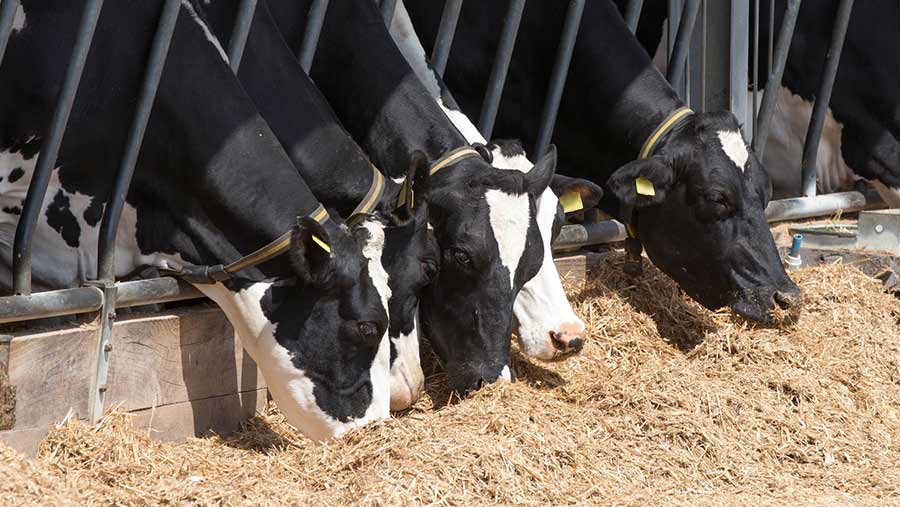How to prevent negative energy balance in dairy cows
 © Tim Scrivener
© Tim Scrivener Energy deficits in lactating cows are often only identified once milk volume drops or noticeable changes in body condition are seen.
Yet, milk records can be an untapped source of insight into the nutritional requirements of dairy cows, particularly during the first few weeks of lactation.
Producers are therefore being encouraged to utilise milk lactose levels to help predict negative energy balance, manage nutrition and optimise performance.
Dairy cows have varying nutritional requirements throughout lactation, but, undoubtedly, they are at the highest during the first few weeks after calving.
See also: Guide to preventing ketosis and fatty liver in dairy cows
“Meeting these demands can be difficult and, if diets don’t contain enough energy, cows will have a negative energy balance,” says Andrew Jones, an independent nutritionist.
“It’s at this point that requirements for maintenance and lactation exceed dietary intake, altering the cow’s metabolic state, resulting in her not having sufficient nutrients to support both yield and metabolic health.”
Use milk records to assess lactose levels
Producers can use their milk records to assess cow energy levels before physical changes are observed.
“Milk lactose levels indicate if a cow’s glucogenic energy requirements are being met sufficiently,” explains Mr Jones.
It is particularly important to check milk records four to six weeks after calving, because at this point in lactation milk production increases faster than energy intake. Farmers with high-yielding Holstein cows should be aiming for lactose levels above 4.55% (4.65% in Jerseys).
“If they’re below this level it is likely that cows could be underperforming due to an energy deficit, and rations will then need balancing to raise overall energy levels,” says Mr Jones.
Increase dry matter intakes
Early lactation cows are especially prone to acidosis, due to depressed intakes around the time of calving and the rapid increase in diet fermentability as cows transition from dry diets to lactation diets.
This means it is essential to manage dry matter intakes (DMI).
Rob Fowkes, from Quality Liquid Feeds, says diets should focus on delivering correct energy requirements while maintaining a stable rumen pH.
He recommends using an energy-rich feed at between 5-7% of a cow’s DMI three weeks prior to calving. Although, when changing diets, it is important to do so gradually to ensure the rumen environment remains stable to reduce the risk of acidosis, he adds.
“Providing sufficient levels of glucogenic energy, in the form of molasses, will enable this and prevent excessive mobilisation of body fat, which can lead to conditions such as ketosis and fatty liver.
“The glucogenic supply from the six carbon sugars found in molasses help to condition the liver and increase milk production. And by providing sufficient levels of glucogenic energy in the ration, insulin levels are increased and fat mobilisation decreased.”
This helps to maintain body condition and rumen pH, creating a more efficient rumen environment, resulting in increased fibre digestion and improved forage intakes.
“And, as well as offering a source of energy for efficient rumen processing, the addition of liquid sugar also increases the palatability of the ration, which can reduce sorting and increase DMI,” adds Mr Fowkes.
Top tips to avoid negative energy balance
- Analyse silage every four weeks and adjust ration accordingly
- Check body condition scores throughout lactation cycle
- Manage dry cow nutrition
- Check lactose levels to identify energy deficits
